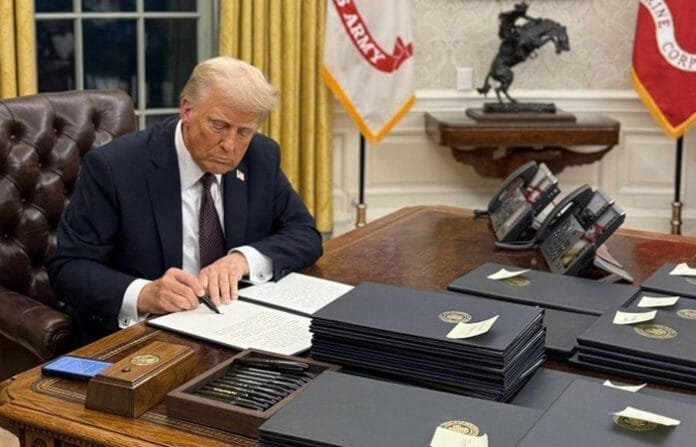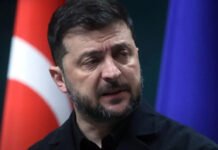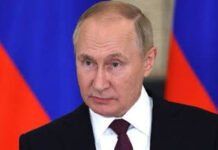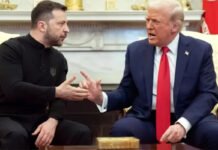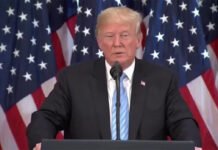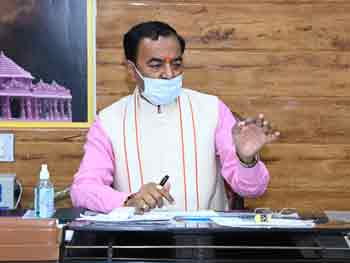In a dramatic turn of international diplomacy, U.S. President Donald Trump has thrust himself into the center of the escalating Thailand-Cambodia conflict, declaring his intent to broker a swift ceasefire. During a high-level press briefing alongside European Commission President Ursula von der Leyen, Trump revealed his behind-the-scenes efforts and delivered strong remarks comparing the Southeast Asian standoff to the long-standing India-Pakistan rivalry. His statements come amid a sudden surge in artillery exchanges between Thailand and Cambodia that has triggered global concern.
Trump’s Ceasefire Mission: “This One’s Easier Than India-Pakistan”
President Trump addressed reporters in Washington, D.C., affirming that he had personally spoken to the leaders of both Thailand and Cambodia. He stated confidently that, despite the ongoing exchange of fire at the border, both sides had shown willingness to begin peace talks.
“We do business with Thailand and Cambodia. But now I’m hearing that they’re fighting each other,” Trump said. “I think it will be easy to resolve this dispute, because I’ve also got agreements between countries like India-Pakistan and Serbia-Kosovo.”
Trump’s comparison with India-Pakistan was pointed and strategic. By emphasizing that he had previously helped to “resolve” Indo-Pak tensions—widely seen as one of the most intractable rivalries in global geopolitics—he positioned the Thailand-Cambodia crisis as a solvable challenge within his diplomatic toolkit.
Escalation at the Border: Artillery Fire Reignites Decades-Old Hostilities
Earlier in the day, Cambodia accused Thailand of initiating artillery shelling in disputed border zones, while Thailand countered with its own allegations, claiming Cambodian military aggression near the Preah Vihear temple region. These accusations revived tensions from previous border skirmishes dating back to 2008-2011, a period marked by UN condemnation and international mediation efforts.
The renewed military activity appeared to contradict Trump’s optimistic claims of a ceasefire agreement. However, sources confirmed that late-night calls made by the U.S. President to both Prime Minister Hun Manet of Cambodia and Prime Minister Srettha Thavisin of Thailand led to a tentative verbal commitment from both leaders to pursue peaceful negotiations.
Trump’s Leverage: Trade Pressure as a Diplomatic Tool
President Trump made it clear that his administration is using economic leverage to steer both nations away from war.
“We’re putting trade pressure on both Thailand and Cambodia,” Trump noted. “We have strong trade relations with these countries, and we want to make sure that peace is maintained.”
Indeed, the United States remains a significant trade partner for both nations. In 2024, bilateral trade with Thailand exceeded $60 billion, while U.S.-Cambodia trade topped $11 billion, with the textile and electronics sectors driving economic ties. By signaling a possible reduction in trade benefits, Trump appears to be applying one of his signature strategies—economic coercion in service of diplomatic ends.
India-Pakistan Mention Sparks Global Interest
Trump’s casual invocation of India and Pakistan, two nuclear-armed neighbors with a history of bloody wars and standoffs, has stirred global headlines. Although India and Pakistan have not publicly acknowledged any mediation by Trump leading to formal agreements, the U.S. President maintained that he had played a “behind-the-scenes” role in de-escalating tensions post-Pulwama and Balakot in 2019.
His statement — “Compared to India-Pakistan, Thailand-Cambodia is an easy fix” — has fueled both curiosity and criticism. Some Indian officials have previously rejected claims of third-party intervention, affirming that bilateral matters should remain bilateral. Nonetheless, Trump’s confident tone suggests he views his past interactions as de facto diplomatic victories, reinforcing his ability to influence the Thailand-Cambodia situation.
Southeast Asia on Edge: Regional Impact of the Border Conflict
The Thailand-Cambodia border, particularly around the ancient Preah Vihear temple, has long been a flashpoint due to competing historical claims. Although the International Court of Justice (ICJ) awarded the temple site to Cambodia in 1962, surrounding areas remain disputed. Recent artillery exchanges have caused civilian panic, with reports of evacuations from border villages and closure of key trade checkpoints.
ASEAN leaders have urged restraint, but Trump’s high-profile involvement has added a new dimension to the conflict. While China and Vietnam monitor developments closely, fearing regional instability, the U.S. intervention signals a growing American interest in playing a more assertive role in Asian geopolitics.
What’s Next: Peace Talks or Prolonged Tensions?
Despite the verbal ceasefire agreement, analysts caution that words must now be followed by concrete de-escalation measures. Both Cambodia and Thailand maintain well-armed border patrols, and past experiences suggest that misfires and misunderstandings can easily reignite hostilities.
The United Nations has not yet issued a formal response, but diplomatic channels remain active. Trump indicated that the State Department is working with envoys from both nations to facilitate backchannel negotiations.
Meanwhile, Trump’s emphasis on personal diplomacy—speaking directly to world leaders and using trade as leverage—shows a continuation of his unconventional approach to foreign policy. Whether this strategy brings about lasting peace remains to be seen.
The Bigger Picture: Trump’s Foreign Policy and Global Conflict Resolution
President Trump’s intervention in the Thailand-Cambodia dispute is emblematic of his broader approach to international diplomacy: bilateral engagement, economic pressure, and personal negotiation. By placing this conflict alongside India-Pakistan and Serbia-Kosovo, Trump is not just framing it as a manageable issue—he’s also building a narrative of global peacemaker as he eyes further geopolitical influence.
Critics argue that his approach lacks institutional grounding, while supporters claim his results-focused attitude gets things done. Either way, the world is watching closely as Cambodia and Thailand edge toward peace or further conflict, with Trump once again at the center of international headlines.
Conclusion: A War That Must Be Avoided
The renewed hostility between Thailand and Cambodia comes at a time when Southeast Asia is already grappling with economic volatility, climate crises, and shifting power dynamics. A full-scale conflict would not only destabilize the region but also drag in external powers and derail years of development.
President Trump’s intervention—though controversial and unorthodox—has temporarily halted a worsening situation. With trade ties, direct diplomacy, and international attention in play, the coming days will be crucial in determining whether the guns fall silent or the border heats up again.
We will continue to monitor this unfolding story as Trump’s diplomatic gamble plays out on the global stage. The world is watching—and hoping—for peace.

